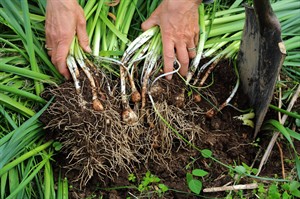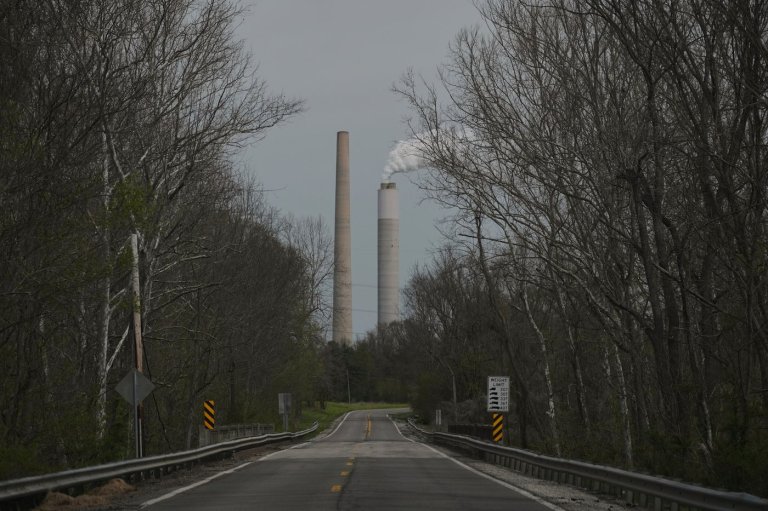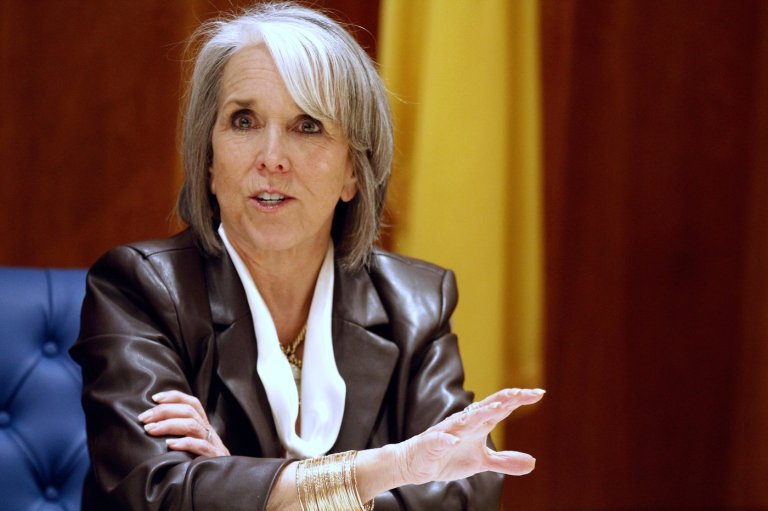
They need their space: tips for keeping your daffodils flowering
Now that daffodil bloom time has passed, some gardeners might be wondering where their flowers were. If some plants remained all leaves, with few or no flowers, why was that?
It might be that overhanging trees have made the location too shady. But the more likely culprit is the plant’s age.
As a daffodil bulb gets older, baby bulbs, called offsets, develop snuggled up against its side. You can picture this most clearly if you realize that a daffodil bulb is, essentially, a compressed stem. That stem is the “plate” at the base of the bulb, and the leaves are the fleshy scales up and around it.
Just as any stem eventually makes side branches, a bulb also, with time, “branches.” These branches — the offsets — likewise beget their own babies. So what you have over time is a lot of bulbs of varying sizes packed into a very small space.
The offsets won’t flower until they reach a certain size. If they are too crowded, they have trouble reaching that size. The result: few or no blooms. (It pays, then, when purchasing bulbs, to get large ones; they make more flowers their first spring.)
GIVE THE BULBS MORE ELBOW ROOM
The obvious solution is to give each developing bulb more room. Dig up the bulbs and separate them as soon as the foliage turns brown. The youngest ones, the ones that have just split off from their mothers, are spoon-shaped. Older ones are round and, if large enough, will each house a single flower bud, possibly two. The larger the bulbs, the better the blooms.
No need to plant the divided bulbs back in the ground immediately. Bulb nurseries store their daffodil bulbs out of the soil in a cool room. It is during the summer, when the bulbs are apparently dormant, that buds inside the bulbs morph into flower buds. Optimum conditions for this change in daffodils are when storage is at 75 per cent humidity and temperatures are around 60 degrees. Easiest, of course, is just to stick the bulbs back in the ground, giving each one enough room to develop and make babies for a few years.
With good conditions, a spoon-shaped baby becomes a small flowering bulb after a year, and in another year that small flowering bulb can make two flower buds. After another year, the “double-nose,” as it’s called, is making offsets of its own.
DAFFODIL FUTURES
Daffodils like moderately rich soil that stays moist but is not soggy. Because most bulb growth takes place after flowering, let the foliage remain undisturbed until it chooses to die down, even if it’s not all that pretty in its final throes. No tying it up or tucking it beneath other plants’ leaves either, as is sometimes recommended for hiding the foliage out of sight. The leaves need light to fatten up their attendant bulbs.
Daffodils do not need this digging and dividing operation every year, which is one reason they are among the best bulbs for naturalizing. Don’t begrudge them the operation when it is finally needed, for you can never have too many daffodils.
Join the Conversation!
Want to share your thoughts, add context, or connect with others in your community?
You must be logged in to post a comment.


















